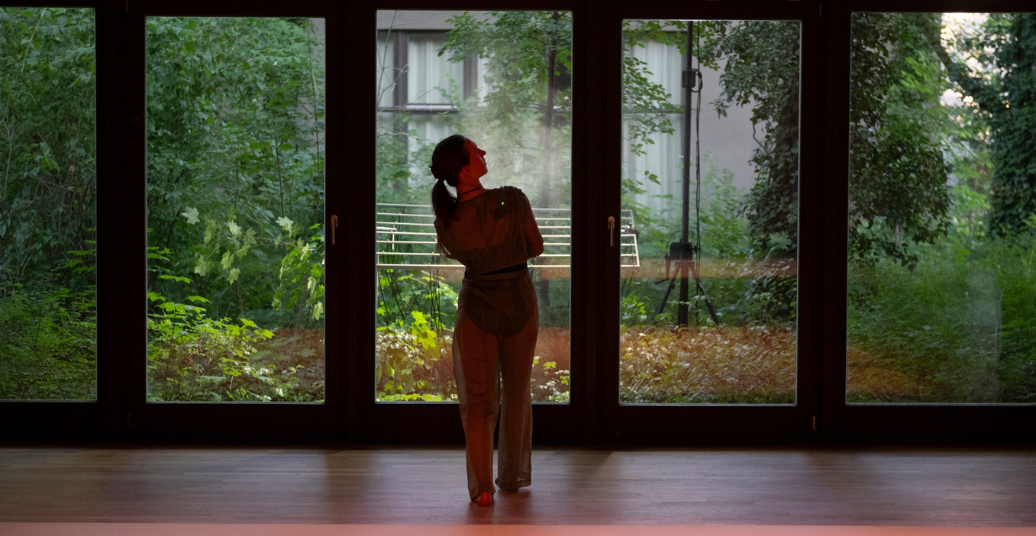In the multimedia performance Anatomorphoses (20-23 June 24, DOCK 11 EDEN) Penelope Wehrli and herteam have future people and fleeting nebulous entities dance – in the hope of changing our self-awareness and perception of the world.
The Homo Sapiens Tripedis uses its spine as a third leg, shuffling across the room or holding itself completely erect on tiptoe, albeit with its upper body always slightly inclined. It whispers soft words to itself, prayer-like. Its relative, Homo Sapiens Medusa, appears like a remote-controlled spiritual essence with its closed eyes and slow movements. Powered by the rhythm of its gentle breathing, it only occasionally opens its eyes wide or emits a shrill cry, which the echo of the space reverberates back to it. Finally, the Homo Sapiens Sepia. The spasmic movements of its individual body parts perform the vestiges of familiar everyday movements, but with no visible connection (a propped up chin, an index finger pointing at something). It appears to communicate with its own kind via spatial symmetries.
In three étude-like chapters, the dancers Julek Kreutzer and Mariana Romagnani portray these three future mutations of humans through the precise articulation of their own anatomical structures. In the process, they move through a light, rectangular hall, separated into two areas by two square marleys. On either side of the hall, in front of a floor-to-ceiling window surrounded by the lushness of the garden, is a grid-like apparatus spraying intermittent clouds of fine water mist into the air. These apparati are steered by sensors, which the dancers’ movements translate into signals. New misty formations continually appear above them, sometimes denser and sometimes clearer, shimmering in the spotlight.
Depending on our perspective and interests, we in the audience either collectively observe these interlocking processes in bodies of bone, flesh, water and light or zoom in on a particular detail. At one point, sitting on a cushion in the middle of the hall, I ask myself to what extent the presence and proximity of the audience to the performative events play a role in this work. On the one hand, the dancers come close enough to touch the audience. On the other hand, this physical proximity does not seem to demand any acknowledgement. Rather, the precisely chiseled gestures exude a hermetic quality, bodies like moving statues.
Furthermore, the aesthetic design of the individual elements of this performance is so prominent that my perception remains purely external. There is little room for the desired raising of consciousness and transformation of my own processes of awareness. Both the beauty of the movements and nebulous sculptures as well as the subtle poetry of Penelope Wehrli’s encyclopedic-like textual intermezzi are nevertheless remarkable and make me want to imagine a world full of more Anatomorphoses.
English translation by Melissa Maldonado
Anatomorphoses by Penelope Wehrli was shown from June, 20-23 2024 at DOCK 11 EDEN.




